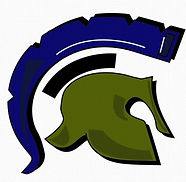
Kevin GT-EFOLIO
Catapult Project
1. Define the Problem
What need or want must be met by the solution?
We must create an efficent working cataplut in order to successfully complete the project.
2. Brainstorming
List/sketch possible solutions that might be used in your final design. Clearly identify and describe how each of these ideas relates to the problem statement (AT LEAST 5)
***Done in Notebook***
3. Research and generating ideas (marshmallow launchers, catapults, trebuchets, etc)
In the space below, document your research. Be sure to include proper citations at the end of your notes. (HOMEWORK)
https://sites.google.com/site/physicsofcatapults/home/history-of-catapults
http://science.howstuffworks.com/transport/engines-equipment/question127.htm




4. Identifying criteria and specifying constraints
What are the criteria and constraints of the design problem?
Criteria: Materials-Space-Time-Size
Constraints: Time-Space-Money-Materials
5. Exploring possibilities
Reflect on your brainstormed ideas and research notes and describe the plusses and minuses of each design approach you have considered.
Sketch 1: " Popsicle Sticks catsapult",Very simple design, probably will take minimual effort, but will mostlikely be unstable.
Sketch 2: "Da vinci catapult", seems to be very complex and straineous. WWill take a good amount of tiime to complete but will probably over shoot.
Sketch 3: "Standard catapult", seems easy to construct. Should e able to withstand good amounts of pressure in rder to ensure that the object that will be launched will be able to launch properly in the basket.
6. Selecting an approach
***Done in Notebook***
7. Developing a design proposal
Based on the evaluation of your ideas, develop a design proposal for the highest-scoring idea. Include working drawings (sketches with dimensions, so that you could build your project). Attach your working drawings to this sheet. Determine the materials you plan to use based on your design. List the material and quantity below.
-15 craft sticks
- 5 rubber bands
-One (1) cardboard tube (1.7” diameter and 11” length or a standard paper towel tube)
-Glue
8. Making a model or prototype
In the space below, document the construction of the model/prototype. Be sure to include sketches/pictures as appropriate.
***In NoteBook***
9. Testing and evaluating the design, using specifications
As you create your solution, you will perform tests to make sure that the solution is meeting the needs of the given problem. If your solution does not work, you may need to repeat the previous steps of the Engineering Design Process until you find a functional design. In the space below, document the type of tests you conducted and the results.
Testing:
Trial 1:[Limited Resistance] The ball hits the rim and rolls back to me.
Trial 2:[Moderate Resistance] The ball sometimes would make the basket.
Trial 3:[Strong Resistance] The ball would rebound or shoot over the basket.
10. Refining the design
Based on your tests, what design refinements should be made to the prototype to ensure that it can satisfy all of the criteria and constraints of the design problem.
Refinements: Some refinements that I needed to do/change were the amount of rubber bands that would help launch the ball into the basket. Also I needed to refine the shape of the cardboard tubing that held the ball because when it was cut like a perfect cylinder, the ball would only launch straight ahead. And so I made an angled cut so the ball could travel more efficently.
11. Creating or Making it
Modify your model/prototype to incorporate the design refinements you identified in section 10. What additional steps would be necessary to produce the final product for the customer?
You must be able to test the finished product in order to ensure that it is functioning properly. As well as inspect the product so that if needed, more modifications can be done.
12. Communicating processes and results (1-Page Reflection on the Whole Process)
***Found on Subpage***

